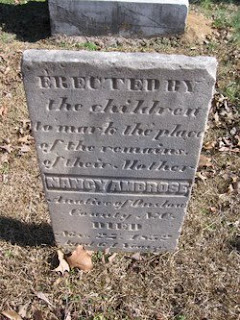
The Clower Cemetery in Holmes County is one of many small family cemeteries in this county, similar to many others in the older counties in the State of Mississippi. You may have heard about one particularly well-known Clower family member, Jerry Clower, who is famous for his humorous stories about local life and lore in his native state. The Clower Family, like so many other families in Mississippi, tend to bury their loved ones either near the church they attended or in a small family cemetery, often named for the family and almost always originally located on land owned by that family. The grave of Purity Clower, the wife of William Clower, likely this family's pioneer, is located here in Clower Cemetery. Purity was born on May 12, 1794, and she died on April 11, 1854.

Grave Marker of Martha E. G. Pickett
Buried in Clower Cemetery, Holmes Co., MS
b. December 16, 1798
d. April 10, 1857
Also buried in the Clower Cemetery is Martha E. G. Pickett, whose grave marker is pictured above. It was readily apparent this very old marker appeared to have had a "blue substance" applied to it. The immediate questions that came to mind were three of the usual five w's: Who, What, and Why? I certainly don't know (at least not yet) who applied the substance to the gravestone. What is a little easier. Based on the traces of the blue substance on the vegetation in front and beside the gravestone, the mystery substance, "appears" to be spray paint. My initial answer to the question of why, is that whoever applied the "paint" may have believed it would cause the engraving to be more readable.
Today, before I wrote this post, I did a little detective work on my own using "google" and some other reference material, but surprisingly, I found nothing that addresses the obvious blue discoloration of the stone. Next, I consulted the Head Graveyard Rabbit who is truly an expert on these things, and he has neither seen nor heard of this particular phenomenon.
So that leaves it up to you, the readers, to help solve solve the mystery of the blue substance that partially covers Martha Pickett's gravestone.

























